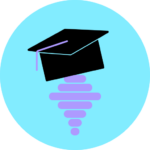The Internet of Things and Its Implications for Education
The Internet of Things (IoT) is revolutionizing various sectors, and education is no exception.
Understanding the Internet of Things in Education
The Internet of Things (IoT) refers to the network of interconnected devices that communicate and exchange data with each other via the Internet. In the educational sector, IoT has the potential to transform traditional learning environments into dynamic, data-driven ecosystems. By leveraging IoT, educational institutions can enhance learning experiences, streamline operations, and foster greater engagement among students and teachers. IoT in education encompasses a range of applications, from smart classrooms to connected learning devices, each contributing to a more interactive and efficient educational experience.
The Role of IoT in Enhancing Learning Environments
IoT can significantly enhance learning environments by introducing smart classrooms equipped with connected devices such as interactive whiteboards, tablets, and projectors. These tools enable educators to deliver content more effectively and engage students in innovative ways. Smart classrooms can also adapt to students’ learning needs by providing personalized content and real-time feedback. Moreover, IoT devices can automate mundane tasks like attendance tracking and classroom management, allowing teachers to focus more on instruction.
Another crucial aspect of IoT in education is its ability to facilitate remote learning. With IoT-enabled devices, students can access educational resources from anywhere, breaking down geographical barriers and providing opportunities for a more inclusive education. This accessibility is particularly beneficial for students in remote areas or those with disabilities, ensuring that everyone can benefit from quality education.
Data-Driven Insights and Personalized Learning
IoT generates vast amounts of data that can be harnessed to gain valuable insights into students’ learning patterns and behaviors. Through advanced analytics, educators can identify areas where students struggle and tailor their teaching strategies accordingly. This data-driven approach enables personalized learning, where students receive customized content that aligns with their individual learning styles and paces.
Personalized learning through IoT can lead to improved academic outcomes by addressing each student’s unique needs. By providing timely interventions and support, educators can help students overcome challenges and achieve their full potential. Furthermore, parents can be kept informed of their children’s progress through IoT-enabled platforms, fostering a collaborative environment between parents, teachers, and students.
Challenges and Considerations in Implementing IoT in Education
Despite its potential benefits, implementing IoT in education comes with certain challenges. Privacy and security concerns are paramount, as educational institutions must safeguard sensitive student data from unauthorized access and breaches. Additionally, the cost of deploying IoT infrastructure can be prohibitive for some schools, particularly those in under-resourced areas.
To address these challenges, educational institutions must adopt robust data protection measures and ensure compliance with relevant regulations. They should also explore partnerships with technology providers to access affordable IoT solutions. Training educators and staff on how to effectively use IoT devices is crucial to maximizing their potential and minimizing disruptions.
Future Implications of IoT in Education
The future of IoT in education is promising, with the potential to revolutionize how we teach and learn. As technology continues to evolve, IoT will likely become more integrated into educational systems, offering even more innovative solutions for enhancing learning experiences. Future developments may include AI-driven IoT applications that can predict students’ needs and automate personalized learning pathways.
Moreover, IoT could facilitate more collaborative learning environments, where students from different parts of the world can connect and collaborate on projects in real-time. This global connectivity can enrich educational experiences by exposing students to diverse perspectives and cultures.
Conclusion
The Internet of Things holds significant promise for the future of education. By enhancing learning environments, supporting personalized learning, and enabling global connectivity, IoT can transform education into a more engaging and effective experience. However, to fully realize its potential, educational institutions must carefully consider the challenges and implement strategies to address them. As IoT technology continues to advance, it offers exciting possibilities for creating a more inclusive, data-driven, and innovative educational landscape that benefits students, educators, and society as a whole.
